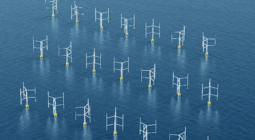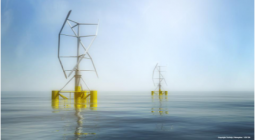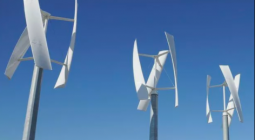Answer regarding the article of Windpower monthly : "Are vertical-axis wind turbines really the future?"

*The answer below is written form the authors of "Numerical modelling and optimization of vertical axis wind turbine pairs: A scale up approach" Joachim Toftegaard Hansen, Mahak Mahak & Iakovos Tzanakis to the article "Are vertical-axis wind turbines really the future?"
"Eize de Vries gives a reasonably balanced report, all be it edging on the side of the existing wind industry interests. From our perspective the primary reason being that the largest wind energy companies in the world are Danish (e.g. Vestas and Ørsted), and they are therefore pushing the Danish universities to do research within the field of HAWT as all their wind turbines have this design.
Having said that, there are some valid points made regarding some of the study limitations that we also acknowledged, such as that 2D was a simplification, and the next step is 3D. However, other studies have shown very good agreement between 2D and 3D (numerical and experimental studies); not to mention that this work has been produced following over 11,500 hours of computing simulations. Thus results are still valid.
Statements such as "Finally, HAWTs can be located much closer to each other in wind farms because of their superior aerodynamic efficiency, therefore they offer a significantly higher yield per area" are rather vague and inconsistent to the existing literature review. For example we are referring to this paper from Prof. John O. Dabiri's (https://static1.squarespace.com/static/55885cf4e4b04e6344662d6a/t/5589cb5fe4b0d39d5568d0b1/1435093855158/Da_JRSE11.pdf) that shows the exact opposite. Also all studies in the field have shown that you definitely cannot space HAWT much closer, because that will be detrimental to their performance. You want to space them as far as possible from each other to avoid the negative effects that they have on each other. Whereas with VAWTs, our study (and verified by other studies in literature) found that VAWT augment each other when they are close to each other. Hence, the behaviour is opposite HAWTs.
Blockage and wake effects in HAWT farms is an industry-wide issue that needs independent scrutiny and more research in alternative designs. For example see this recent report from Orstend: https://www.power-technology.com/features/will-blockage-and-wake-effects-hinder-the-uks-offshore-wind-target/
We (authors of the paper) think every opinion should be backed by research and data. Just because companies have long invested in HAWTs does not mean that they made informed decisions.
Our group will catch up with you soon with more scientific data based responses (not just opinions) that will hopefully stop this sense of dirty competition and give a fair chance to alternative thoughts.
We hope Windpower Monthly has courage to accept facts and take on research-backed comments in good spirit."
Joachim Toftegaard Hansen, Mahak Mahak & Iakovos Tzanakis
8 June 2021





